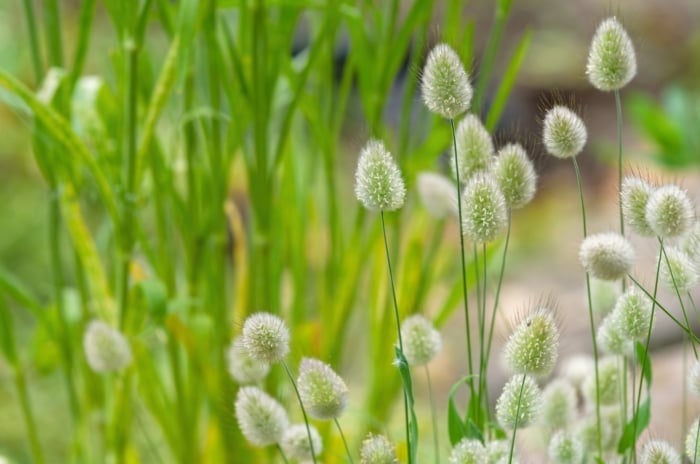19 Sedge Varieties for Your Garden
Sedge makes a beautiful addition to many landscapes. This sturdy and semi-evergreen ornamental has a wide native range and is a low-maintenance alternative to ornamental grasses. Here are 21 of gardening expert Melissa Strauss’ favorite varieties.
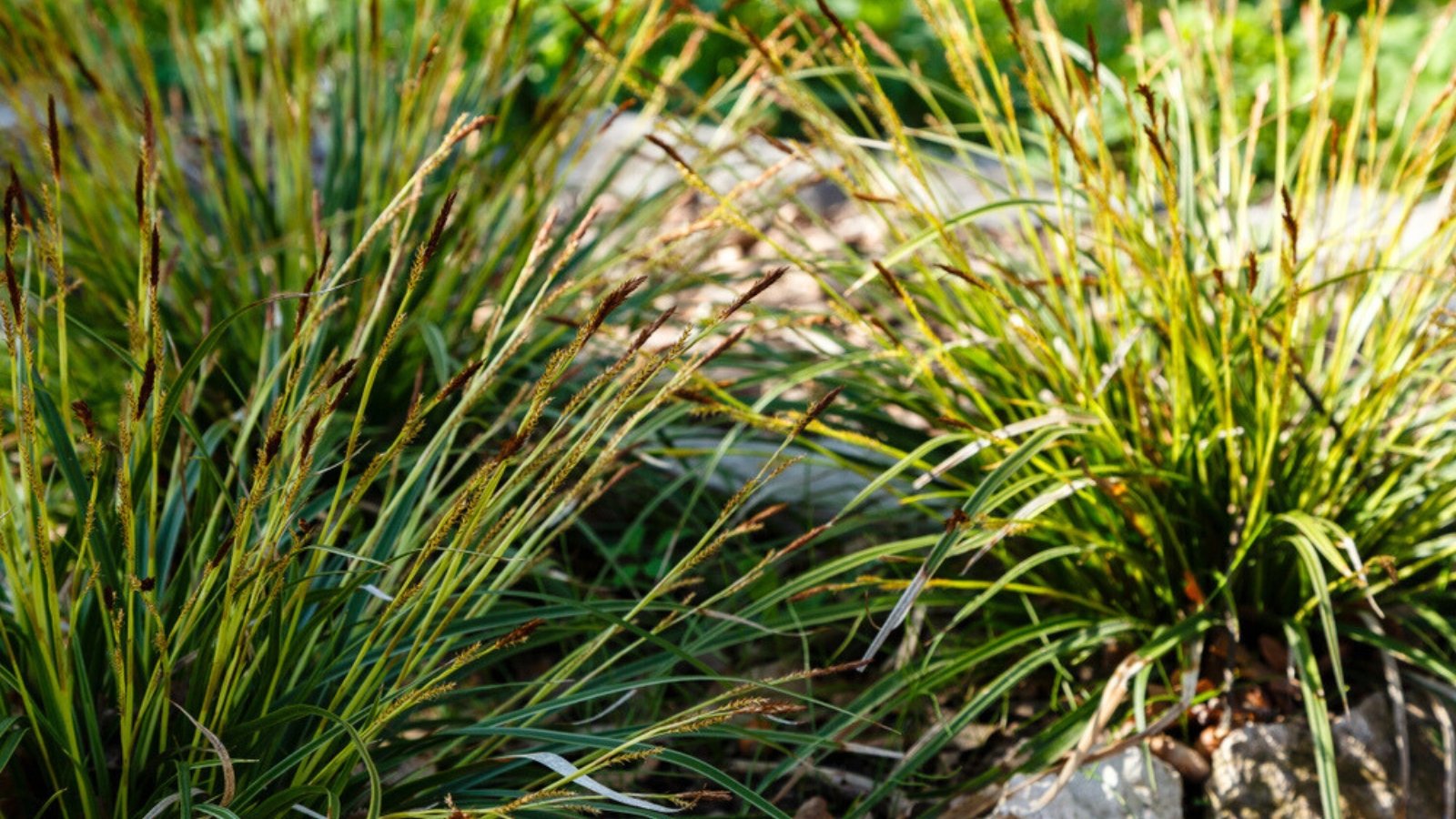
Contents
You’ve likely seen quite a few species of sedge in your time as a gardener. These attractive ornamentals get a lot of use as an alternative to ornamental grasses. Many ornamental grasses can require a lot of maintenance, and most require full sun. Sedge, on the other hand, is perfectly happy growing in partial shade. Some even prefer full shade conditions.
These useful landscaping plants serve more than one function in the garden. They are attractive as borders and look great lining a walkway. Use them as container plants, or choose a species that makes a good ground cover alternative. They are also great for preserving the soil and preventing erosion.
There are species of this plant that grow native to every continent except Antarctica. They adapt to many different climates and, once established, are exceptionally low maintenance. Making sure you’ve selected a sedge that will work in your space isn’t difficult. With close to 2,000 species and countless varieties, there is a beautiful sedge for every garden. Here are 21 of my favorite varieties.
Pennsylvania Sedge

Pennsylvania sedge is a great little variety that grows low to the ground. It makes an excellent grass alternative or ground cover. Requiring very little upkeep, this plant is wonderful for areas of the year that don’t get full sun. While most types of sedge are water-loving plants, this variety is surprisingly drought-tolerant. It will grow in a wide range of soil and moisture conditions.
This variety of sedges has white flowers that appear on spikes in the spring. Pollinators find it appealing, so it’s a great border for the pollinator garden. Avoid planting in areas that receive a lot of traffic, as the slender leaves don’t tolerate it well. This native of eastern and central North America is easy to grow and very cold hardy.
Blue Sedge
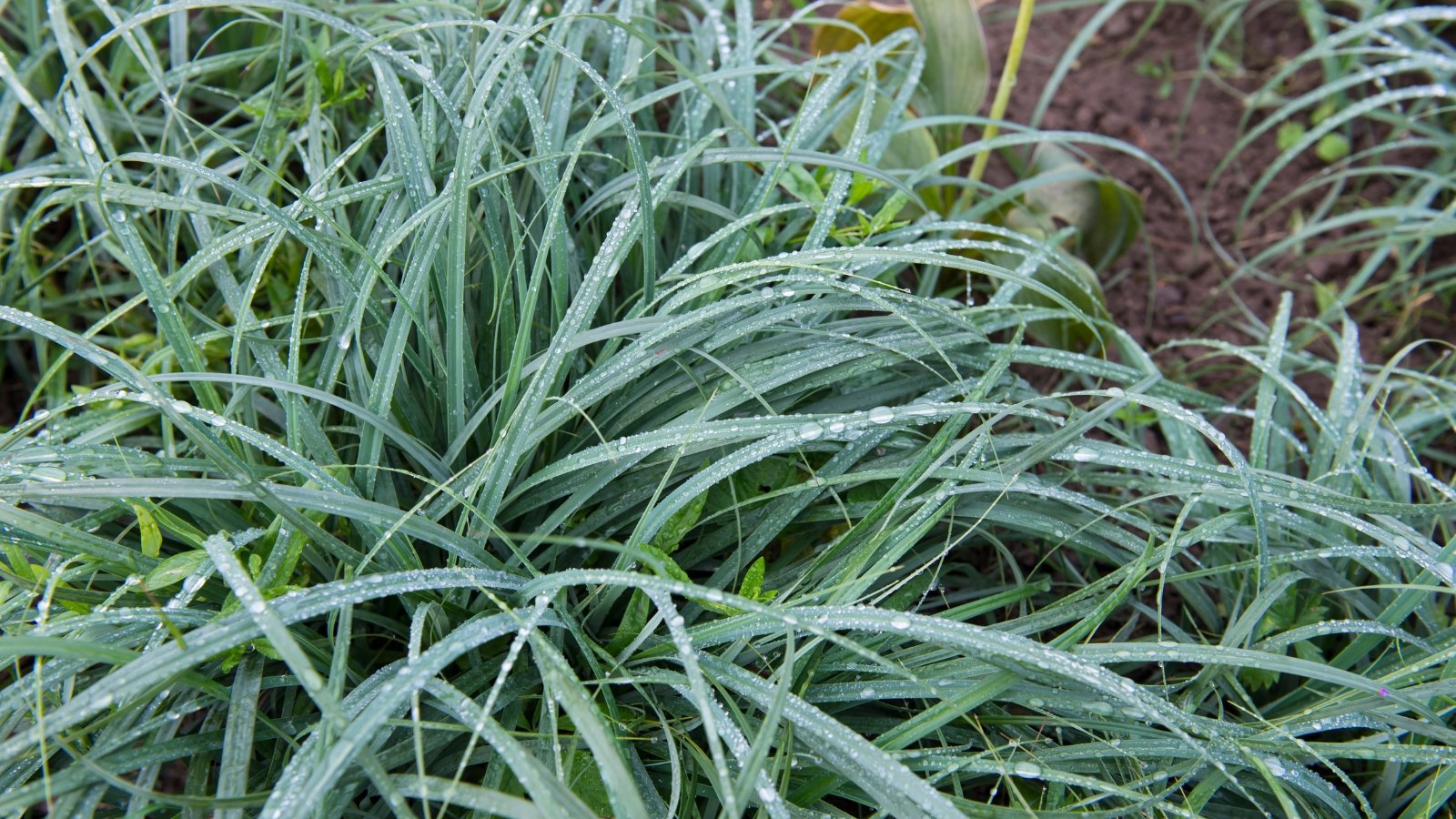
Blue sedge is a versatile beauty with thin, strap-like leaves in a blue-green shade. The underside of the leaves is gray, and the overall effect is cool and airy. This species is versatile. It can be drought tolerant and will spread more slowly this way. If you want your plants to grow more rapidly, give them more moisture, and they will take off.
This European native sedge is tolerant of different exposure conditions as well. It will grow fine in full sun as long as you give it plenty of moisture. In shadier situations, you are unlikely to have to give this plant much supplemental water. This type can also grow in boggy soil, and it stands up well to foot traffic.
Weeping Brown Sedge
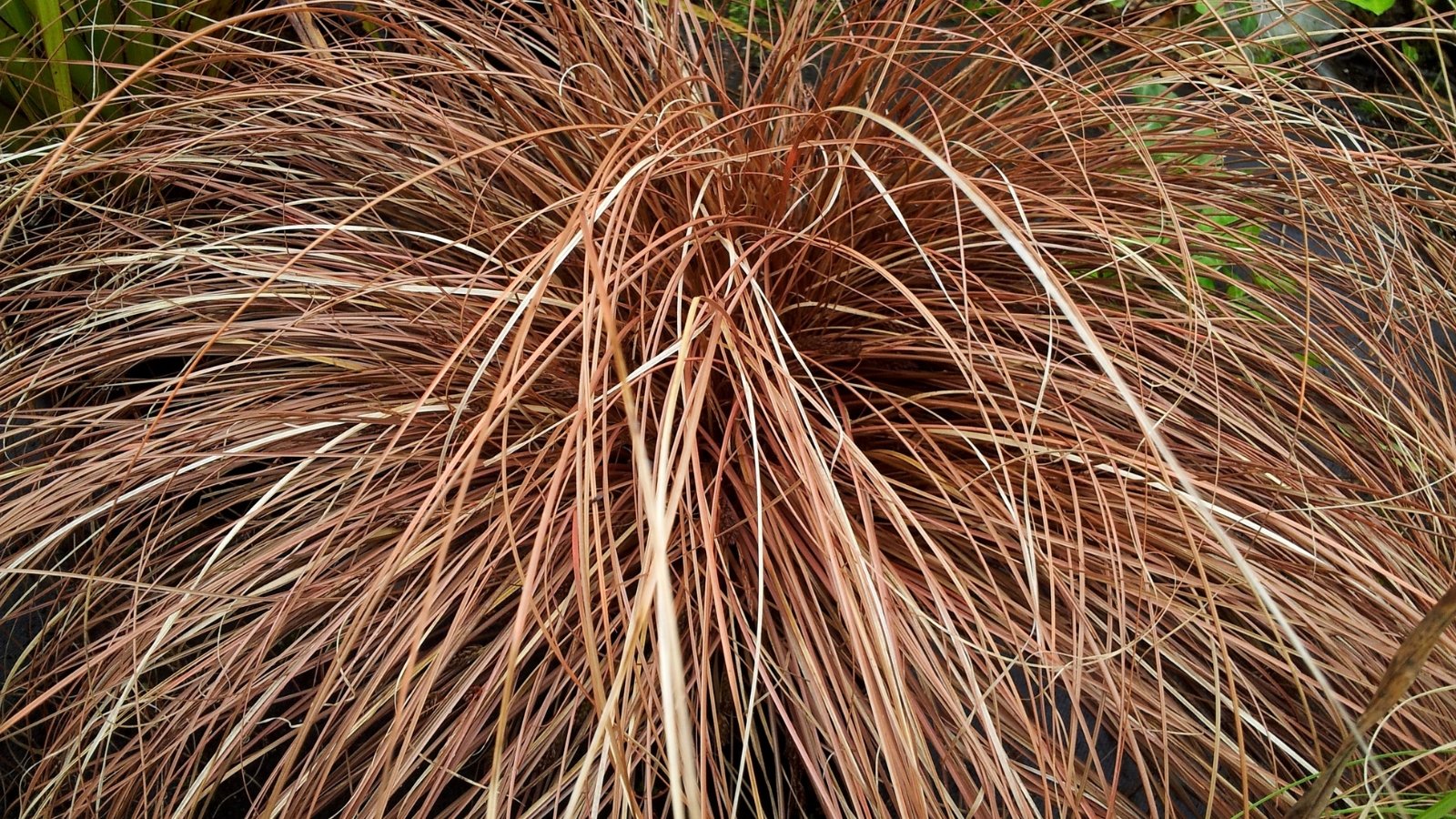
This New Zealand native has a unique and interesting appearance. The long thin leaves are a soothing shade of brown with just the slightest hint of green toward the center. They arch gracefully toward the ground, making this a great plant to soften up parts of the landscape. Plant weeping brown sedge prefers to grow in full sun but will tolerate partial shade without any issues.
While weeping brown sedge will grow more rapidly in moist soil, it is quite drought-tolerant once established. It’s a mid-sized species with a height and spread of one to two feet tall and wide. This plant prefers warm and mild weather and won’t survive winters north of Zone 6. It looks great in a prairie garden or rock garden.
Orange New Zealand Sedge
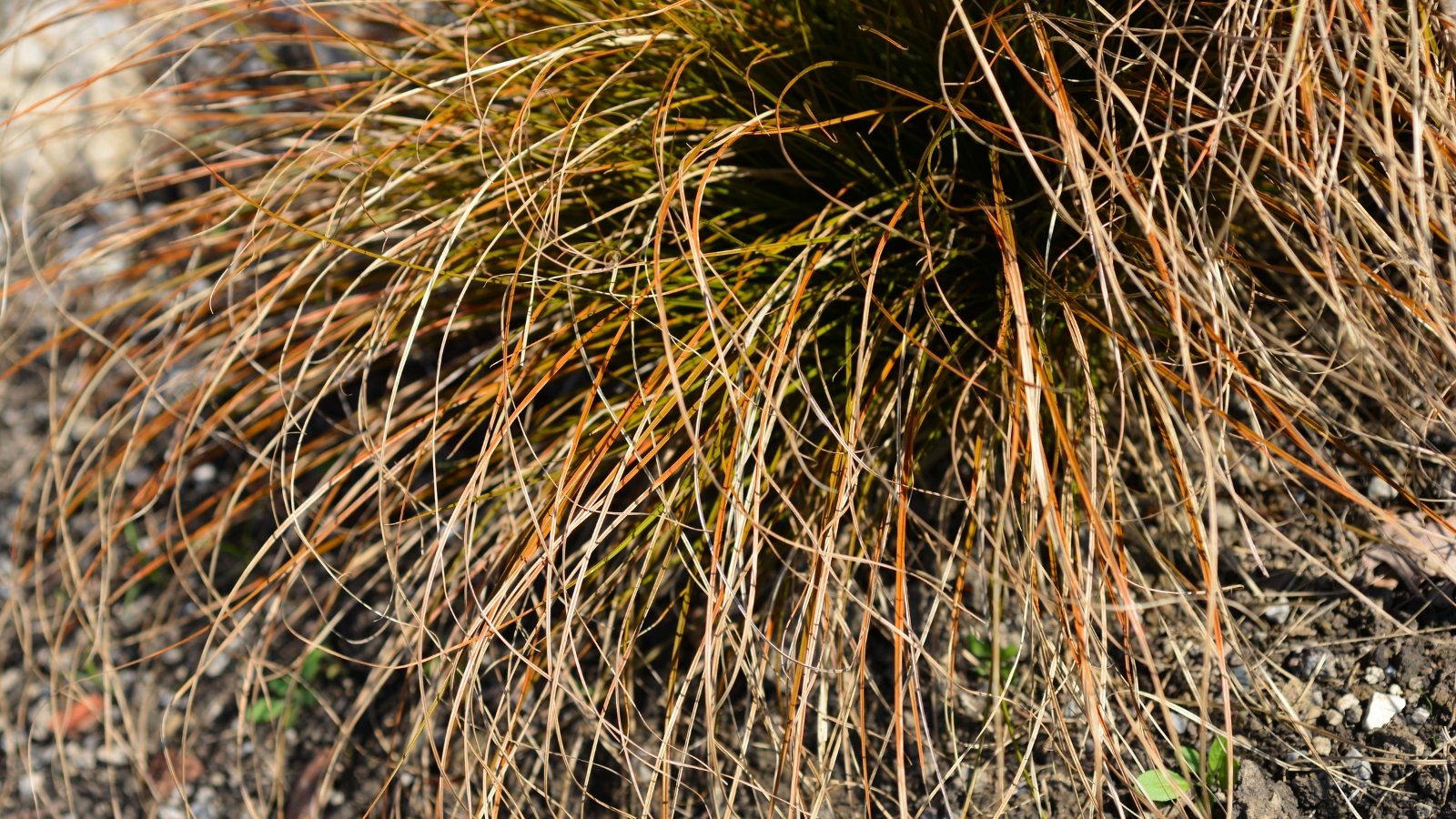
If you’re looking to add some bright, bold color to your landscape, orange New Zealand sedge is a wonderful choice. The long, very narrow leaves are almost needle-like. In the spring and summer, they are olive green. In the fall, they change to a mixture of shades, including brown, tan, and bright rust orange. They are a great way to add color to the fall landscape.
Orange New Zealand sedge makes a nice addition to the cottage garden. It works very well planted around a pond or next to a stream. Give this species moist, well-drained soil, and plant it in full to partial sun. It makes a nice textural addition to flower beds and looks great in container arrangements, as well.
Sand-Bracted Sedge
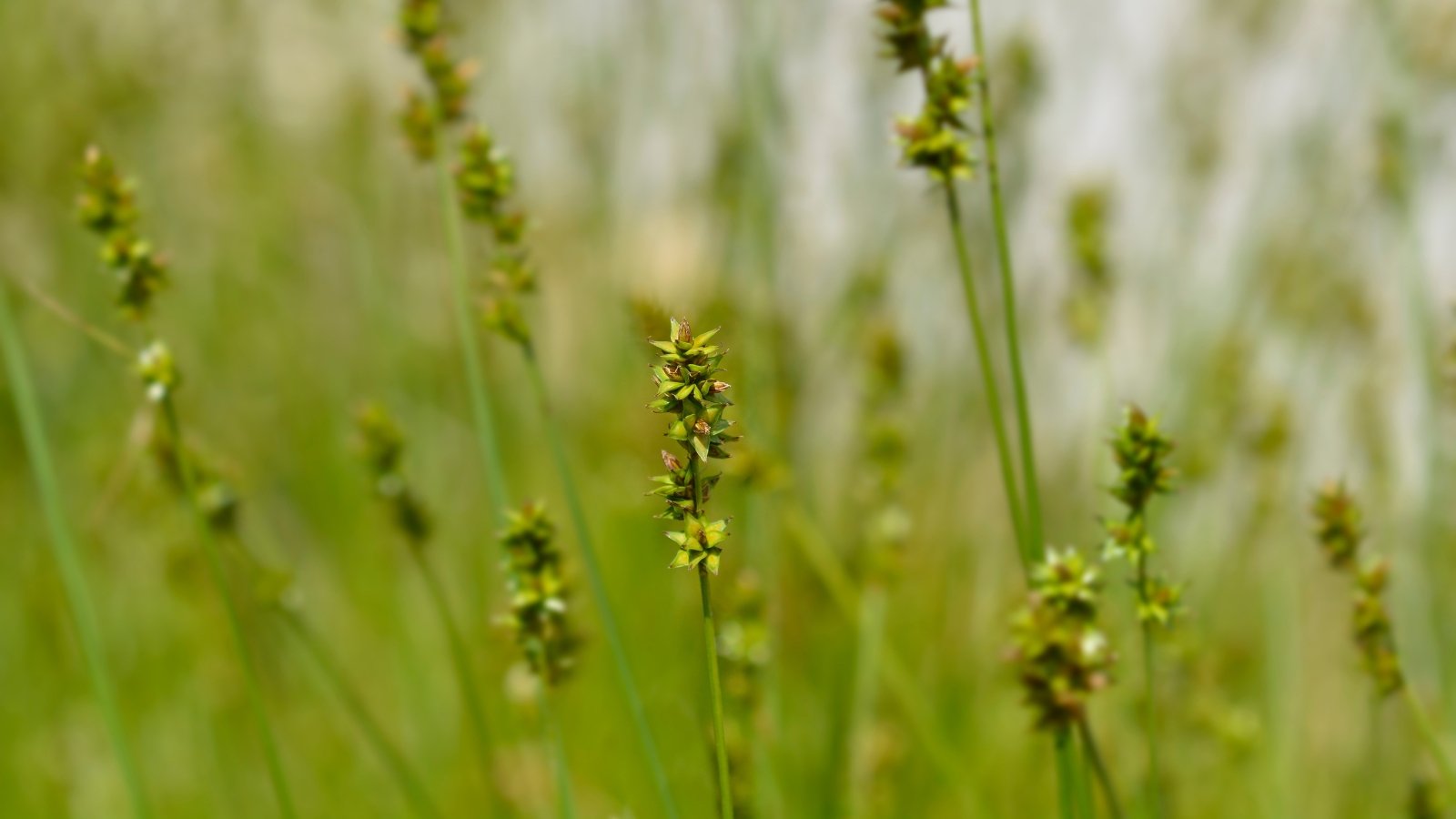
Sand-bracted sedge is a great variety for drier climates. It is among only a few truly drought-tolerant species and will thrive in sandy, dry soil quite nicely. Plant it in full sun or partial shade, adjusting watering to the location. A plant in full sun will need more water, but in general, this is a very low-maintenance species.
Sand-bracted sedge is on the taller side and can reach heights of two to three feet. It does most of its growing in spring and fall when the weather is cool. Flower stems are tall with short, spiky clusters at the ends. The leaves are thin and dark green, and make this plant a nice border grass.
California Field Sedge
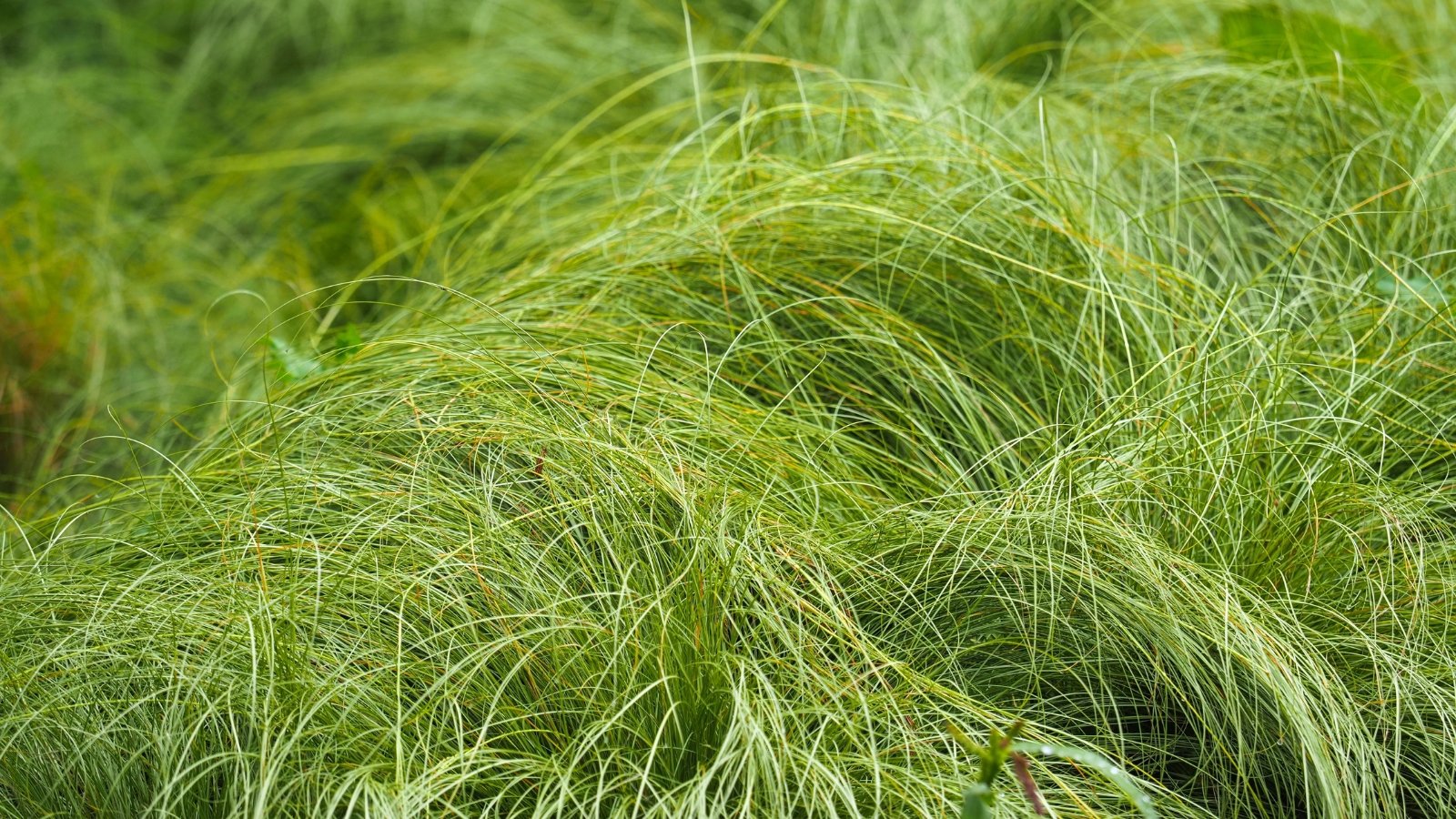
For West Coast gardeners who want a native sedge for the landscape, California field sedge will add a wonderful grassy texture to the garden. Keep this species in moist soil. It isn’t drought tolerant but can grow well in soggy soil types. This is a great plant for sunny, marshy spaces, which many other plants won’t tolerate.
This warm climate sedge does well in disturbed habitats. It is not uncommon to see it along roadsides. This sturdy plant can handle foot traffic, poor soil, and high salinity. It only grows to about one foot tall, but you can keep it shorter by mowing. California field sedge has brilliant, bright green leaves and makes a stunning ornamental.
Palm Sedge
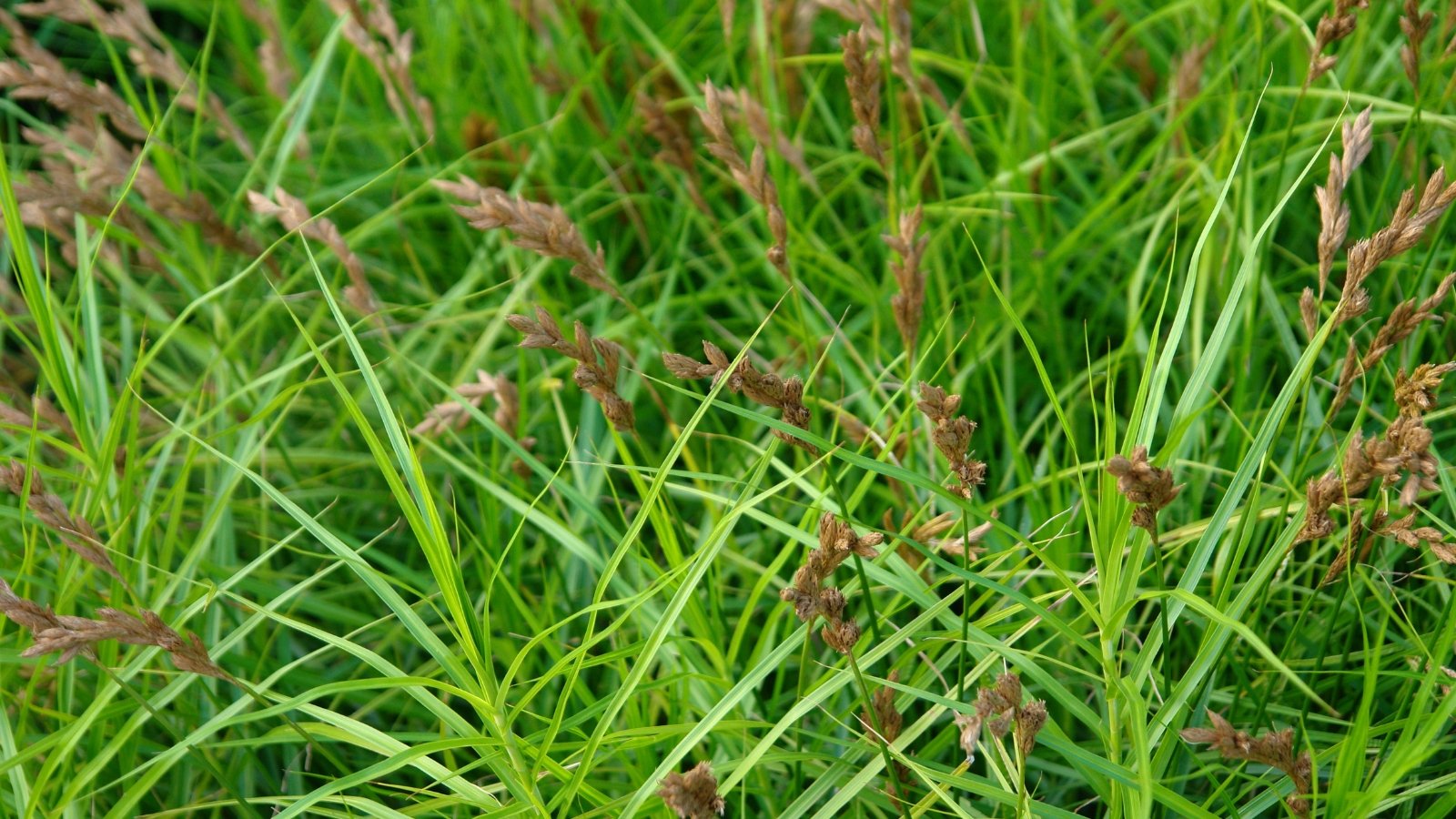
|
|
botanical name Carex muskingumensis |
|---|---|
|
|
sun requirements Full sun to partial shade |
|
|
water needs Low |
|
|
height 2’-3’ |
|
|
hardiness zones 4-9 |
The name palm sedge suits this species. Its tall stems sport long, thin leaves that grow along their length at intervals. These look like small palms growing in a dense clump. They are tall and stately as ornamental grasses go. This is a North American native plant, as well.
As some sedges do, palm sedges can grow in several inches of water. It prefers moist soil and grows best in partial shade. This species is a great addition to the water garden or around the edge of a pond. In the fall, the foliage turns to copper, adding another season of interest.
Appalachian Sedge
Appalachian sedge is a graceful and attractive plant. The long, thin leaves have a weeping habit, making the plant only about ten inches tall max. They swirl and mingle with nearby plants, creating a lot of movement with their dense clumps. This variety is native to the eastern United States, where it is on the endangered list for wild plants. Plant this sedge on a hillside or slope to observe the wonderful curving habit of the leaves.
This is an easy plant to care for. It prefers mild weather, average soil, and moderate moisture. It performs well in partial to full shade but isn’t as tolerant of full sun conditions. The finely cut, dark green foliage is soft and semi-evergreen. It has very good cold tolerance.
Plantain Leaf Sedge
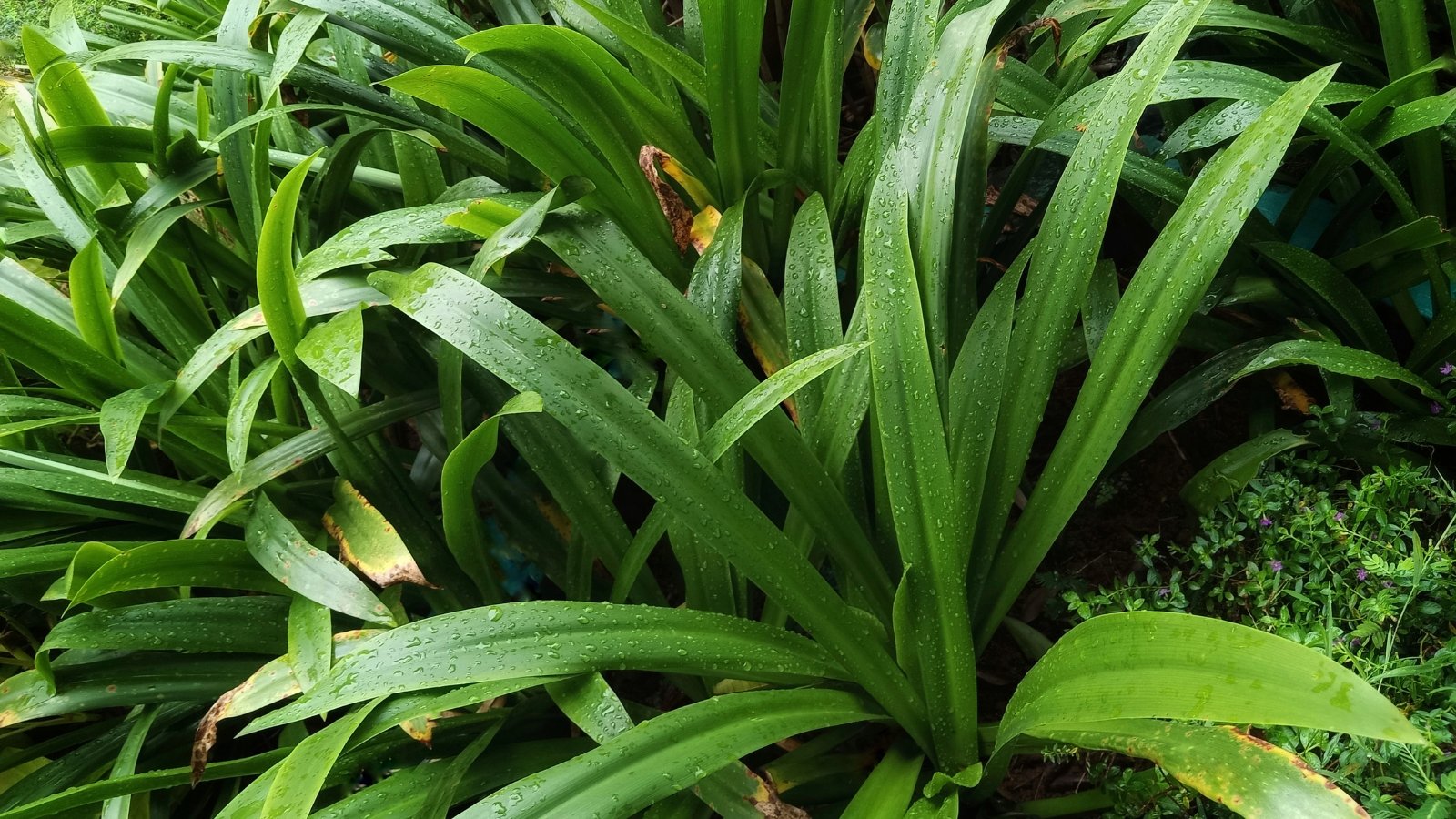
For a bolder look, plantain leaf sedge is a wonderful species. Rather than the fine, delicate appearance of the narrow-leaved types, this species has broader, flat leaves with a central midrib. It stays close to the ground, growing in clumps of eight to twelve inches tall, but sometimes reaching three feet in optimal conditions.
This species has showier flowers than most, with tall spikes rising in spring. The tops of the stems and flowers are purple. Plant plantain leaf sedge in moist, rich soil. This sedge performs best in at least partial shade and does well in the shade garden, too.
Foothill Sedge
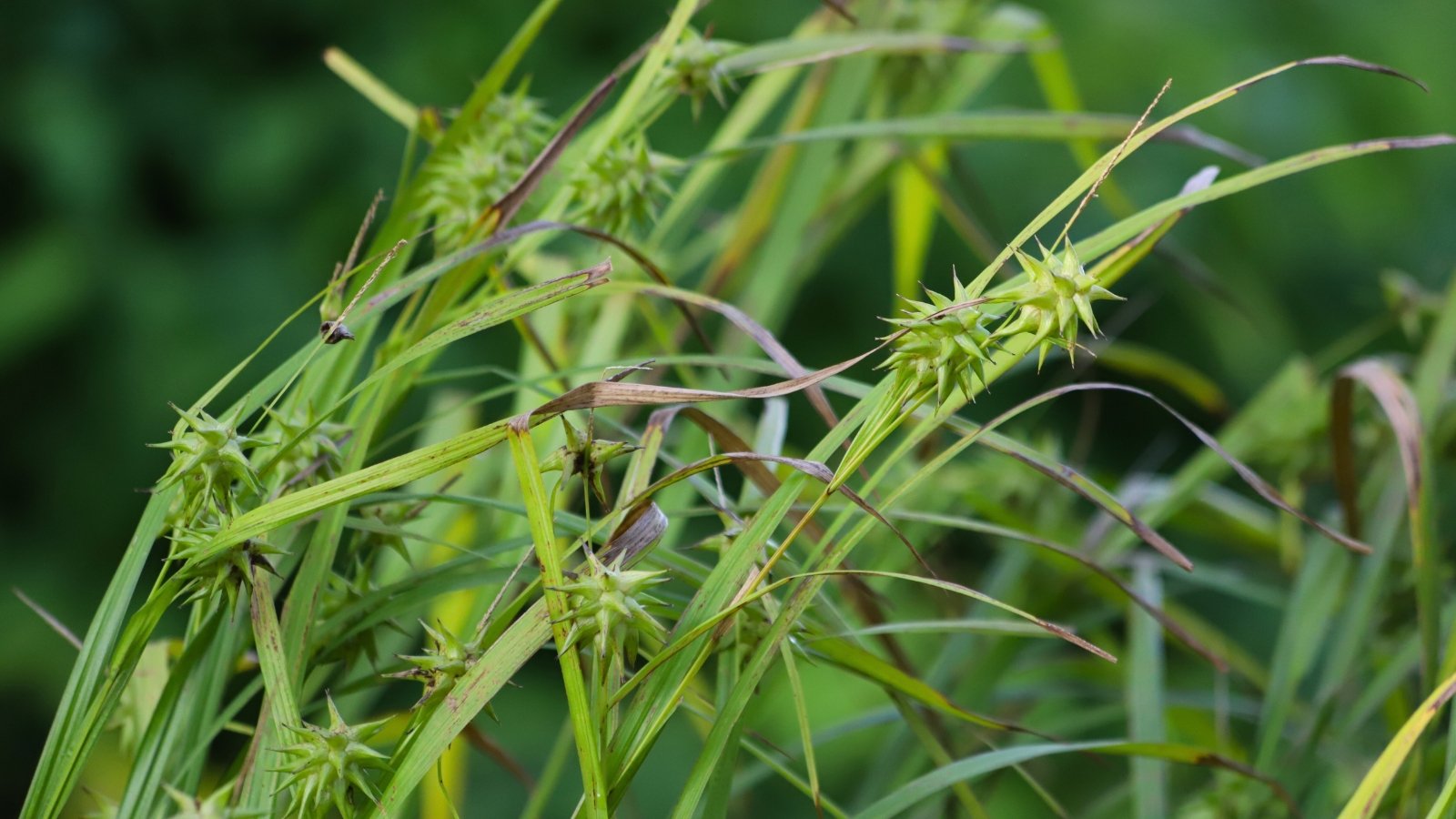
Foothill sedge is a West Coast native that prefers warm weather and has many good qualities. It is tough and sturdy, and once established, it is among the more drought-tolerant species. This type of sedge is often used to control soil erosion. It looks great in mass plantings, too, if you want to use it as a ground cover.
While it is flexible about soil and moisture, this sedge doesn’t tolerate full sun. Make sure to plant it in a spot with partial to full shade. In its native region, it can sometimes grow in full sun, but it needs a lot of moisture.
Shallow Sedge
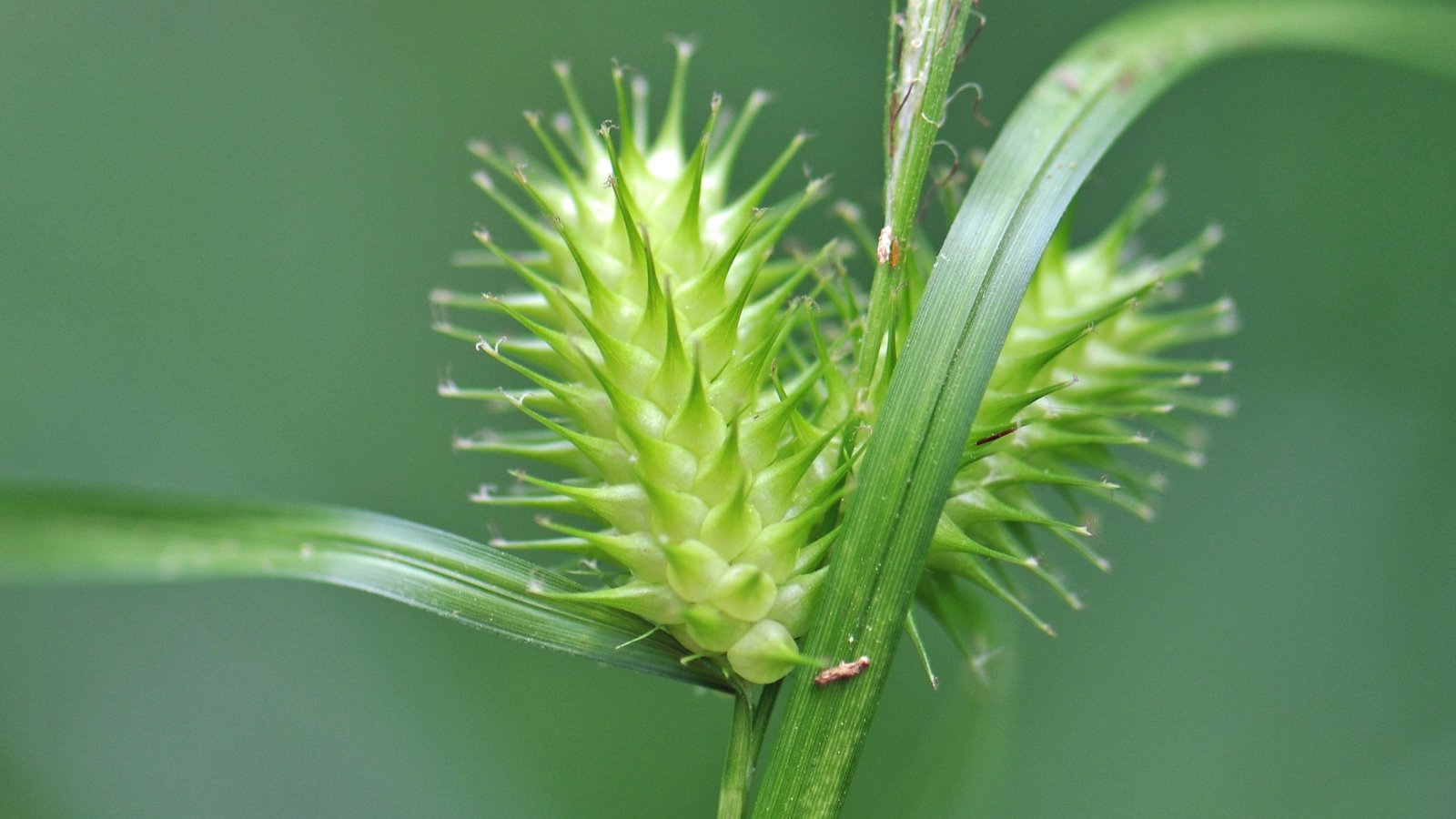
|
|
botanical name Carex lurida |
|---|---|
|
|
sun requirements Full sun to partial shade |
|
|
water needs Moderate to high |
|
|
height 18”-36” |
|
|
hardiness zones 3-8 |
Shallow sedge is a great water garden plant, as it prefers soil that is consistently moist. With its significant moisture needs, this is not a plant for dry climates. It is a vigorous grower, reaching up to three feet tall. The flowers appear in spring and are spiky and bottle-brush-shaped.
The seed heads turn brown when ripe and provide a great food source for local birds. Shallow sedge grows well in wet or boggy soil and looks great around the edge of a pond. Moist soil and full sun to partial shade are ideal for this species.
Spreading Sedge
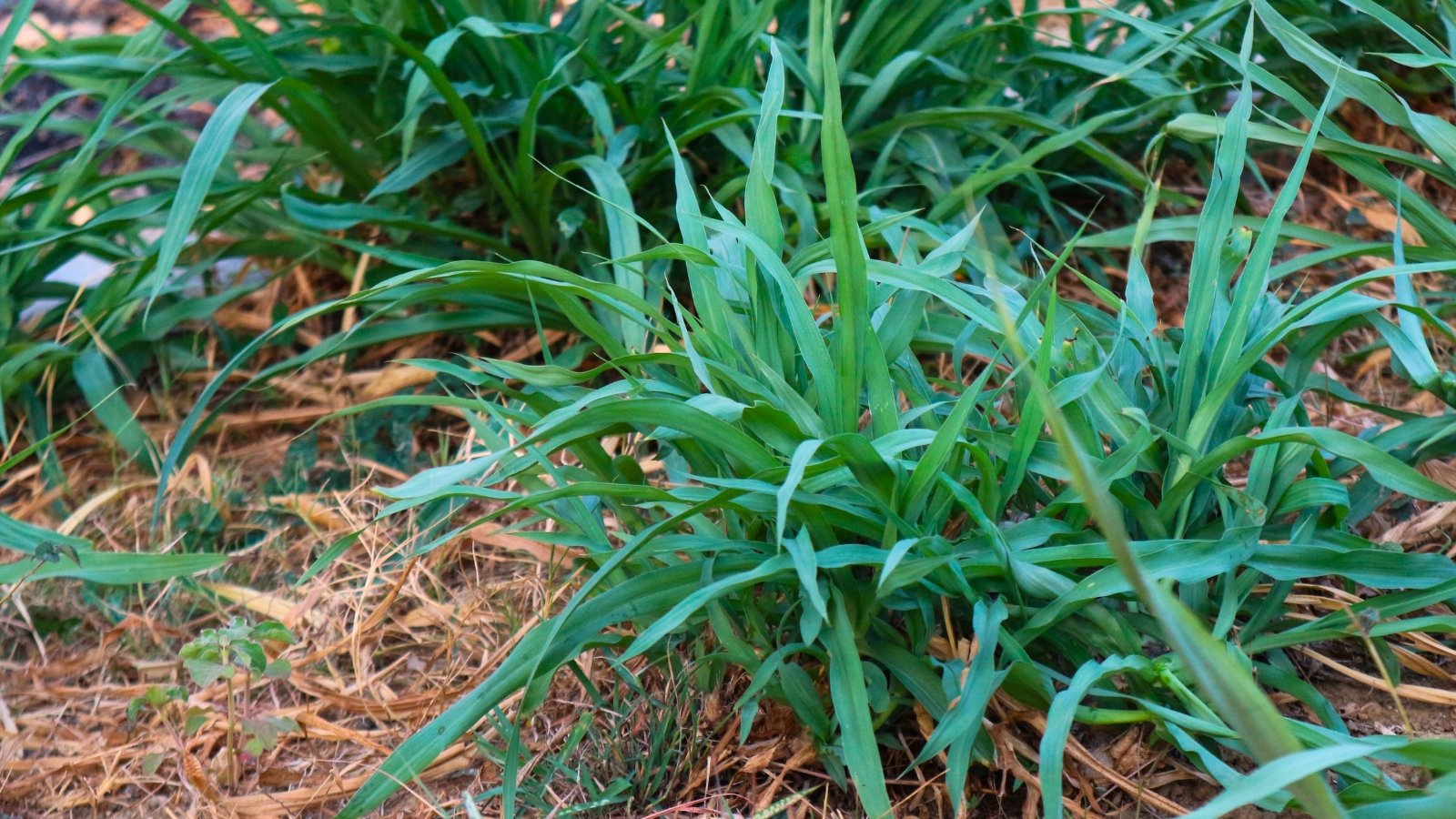
|
|
botanical name Carex laxiculmis |
|---|---|
|
|
sun requirements Partial to full shade |
|
|
water needs Moderate to high |
|
|
height 6”-12” |
|
|
hardiness zones 5-9 |
Spreading sedge makes a wonderful grass alternative ground cover. In areas where grass won’t grow well because of a lack of sunlight, this plant will thrive. Even without mowing, this plant will not grow over a foot tall, so it is easy to manage. Although its name would suggest otherwise, this species actually spreads slowly, forming colonies over time.
Spreading sedge prefers partial to full shade and is not drought tolerant. Keep the soil moist for best results. Its height and attractive foliage make this an ideal border or walkway plant. It is native to the central and southeastern United States.
Fringed Sedge
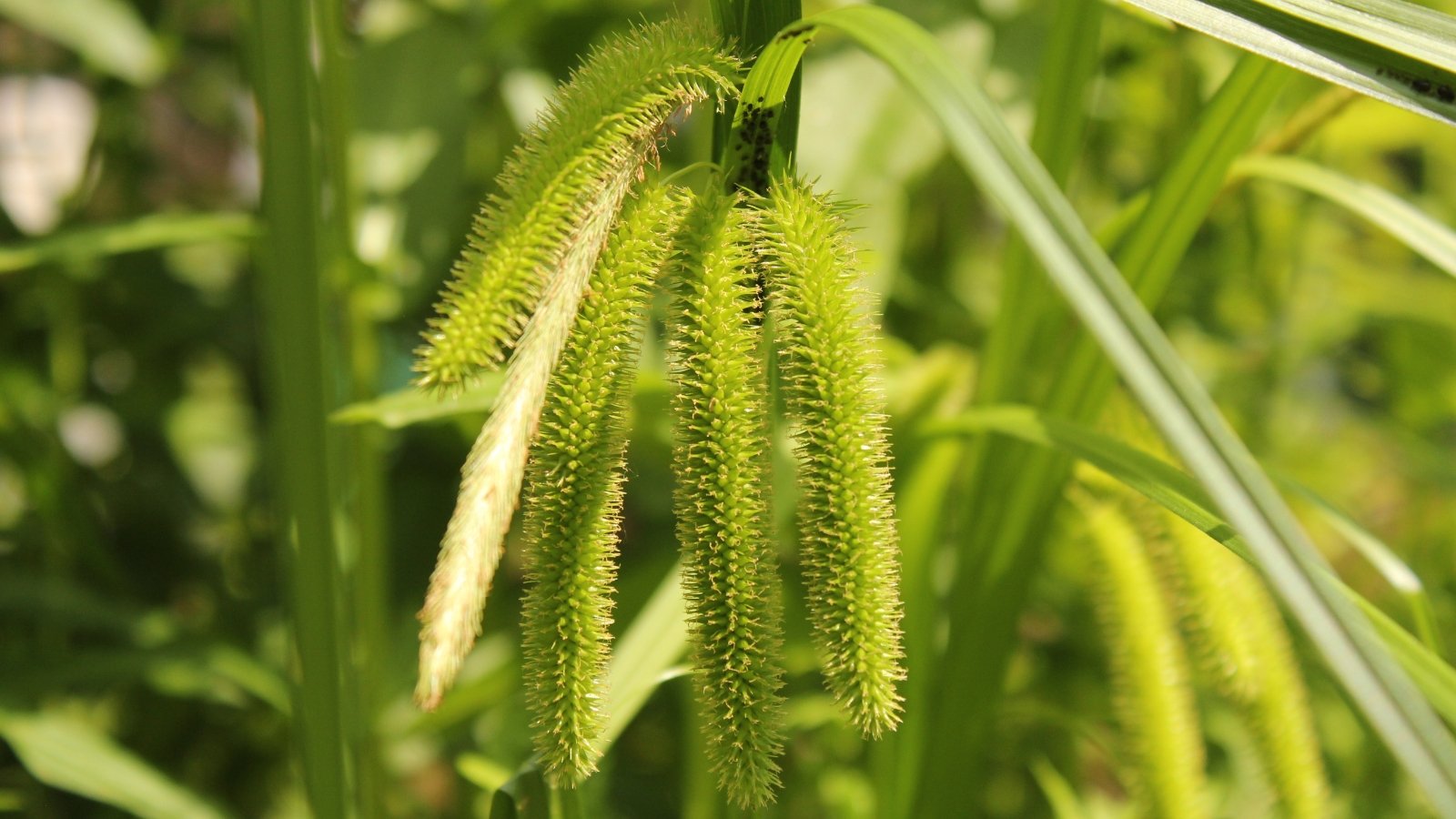
Big and bold, fringed sedge grows up to three feet tall and produces striking seed heads. These seed heads appear in groups and have a weeping quality. This is one of a few sedge species that has noteworthy flowers or seed heads. These seed heads look like fringe, hanging in rows high above the green, strap-like foliage.
Fringed sedge grows best in full sun to partial shade. It is not a drought-tolerant species. This sedge grows well in wet gardens and near ponds and streams. It is able to grow in standing water. Its native range includes the central and eastern United States.
Bristly Sedge
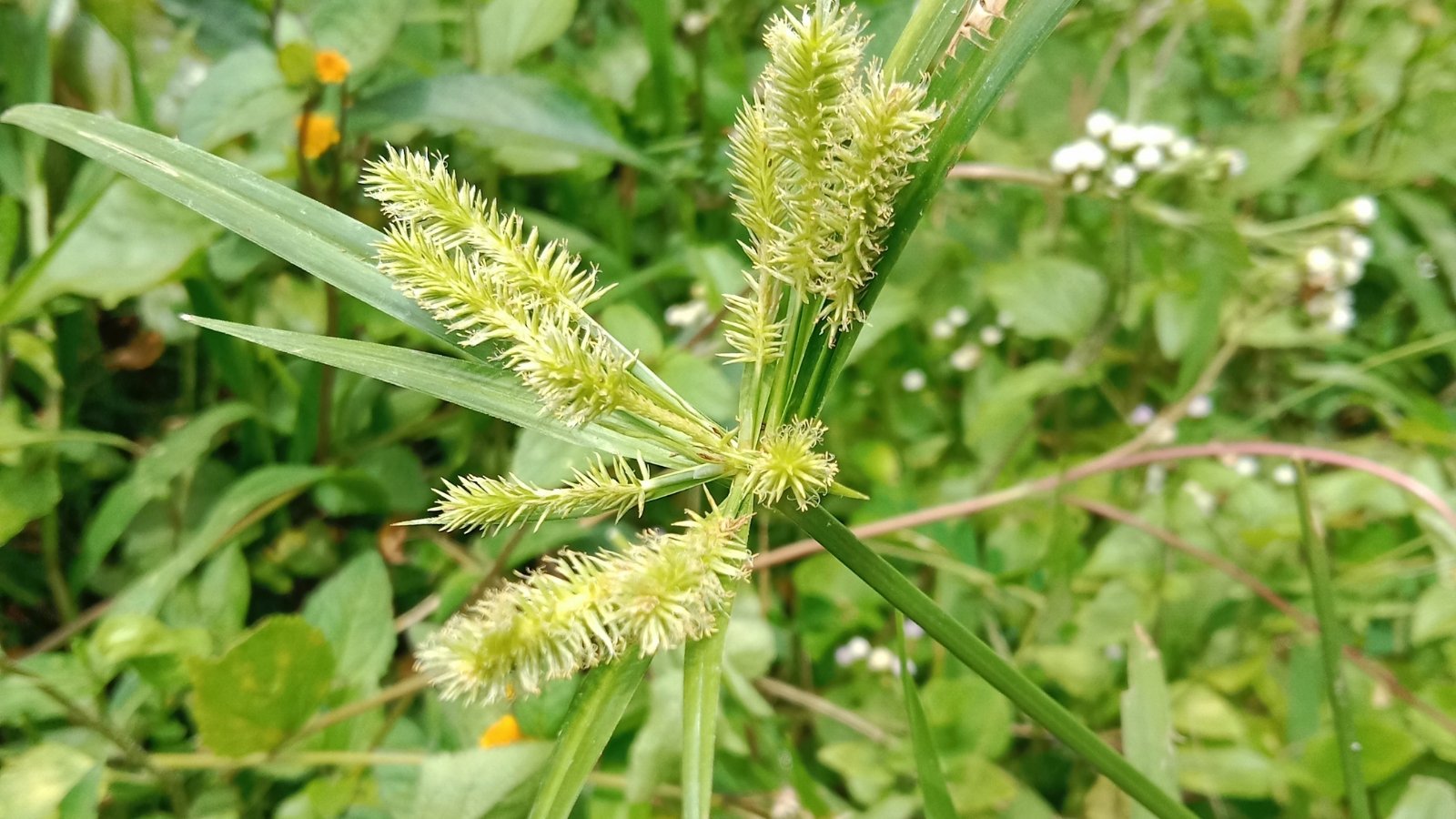
Bristly sedge is very versatile when it comes to temperature and can handle weather that is cold or hot just as well. It is not drought tolerant but flourishes in boggy, wet soil types. It prefers full sun to partial shade.
Bristly sedge is native to North America and grows in marshes, swamps, bogs, and around bodies of water. It has tall leaves that eventually flop over. The seed heads are large and bottle-brush shaped. They grow alongside the lime-green foliage in spring. The growth habit is fountain-like.
Tussock Sedge
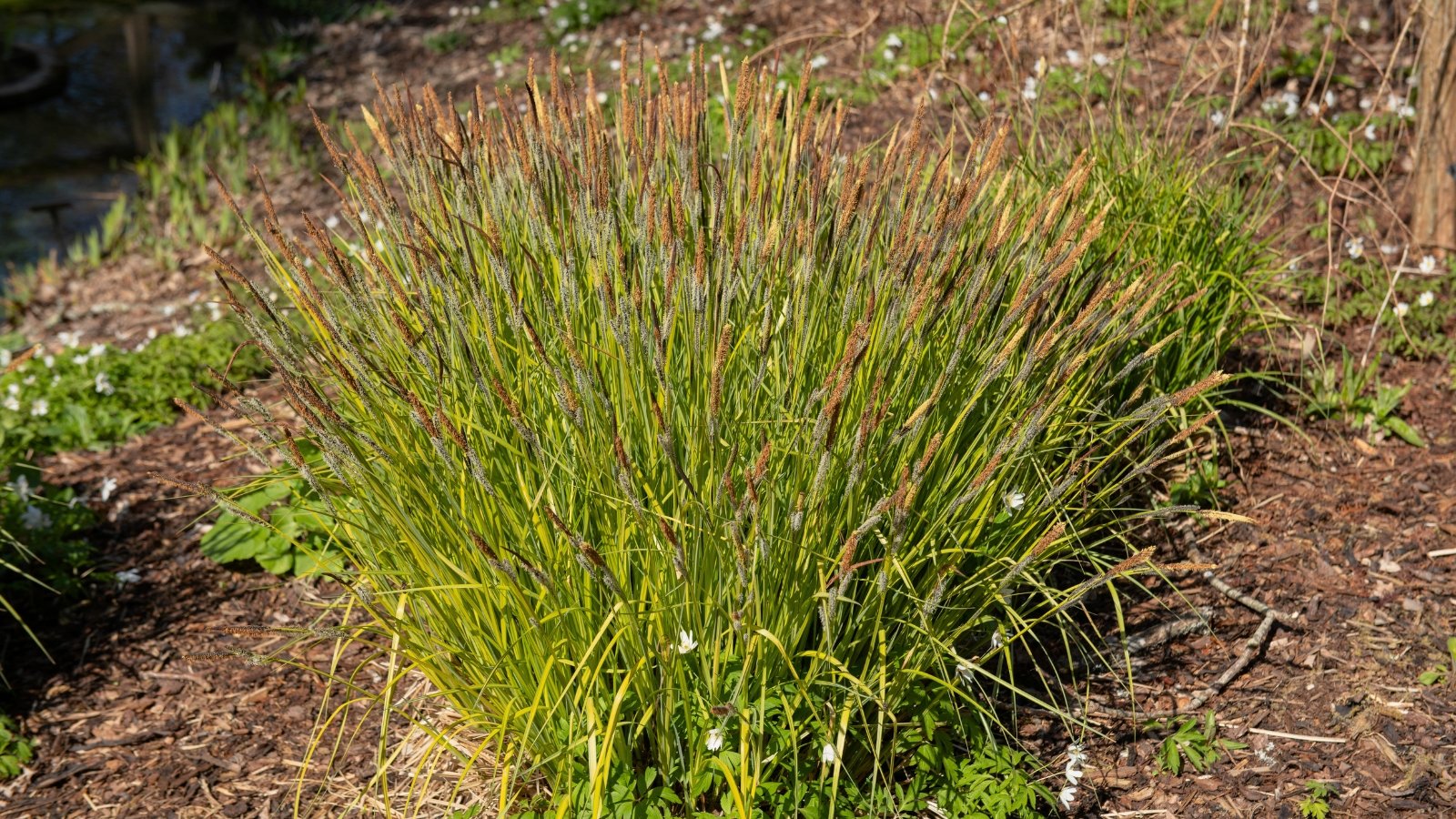
|
|
botanical name Carex stricta |
|---|---|
|
|
sun requirements Full sun to partial shade |
|
|
water needs Moderate to high |
|
|
height 12”-36” |
|
|
hardiness zones 3-8 |
Tussock sedge has a wonderful texture and brings beauty to moist landscapes. You’ll find this moisture-loving plant growing along riverbanks and next to ponds. As long as it gets enough moisture, this plant is very easy to care for. It’s not picky about soil and tolerates and both full sun and partial shade.
While you can grow this plant as a ground cover, it will require mowing to maintain. It grows as tall as three feet when left to its own devices. Tussock sedge is clumping and spreads to form large fountain-like groupings. The leaves are narrow and blue-green, and the seed heads ripen to a rich shade of brown.
Japanese Sedge
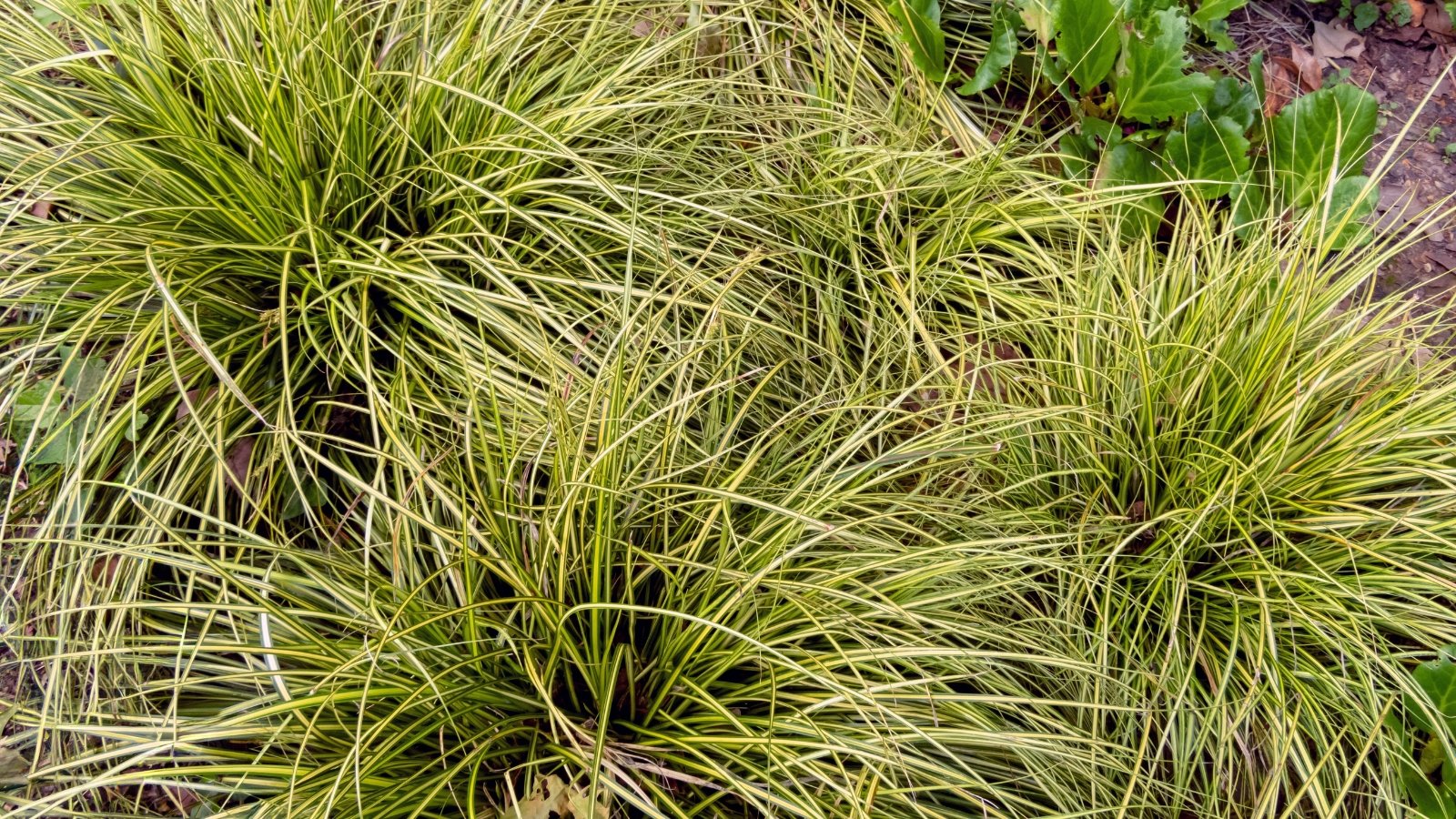
Japanese sedge is one of the more decorative and showy species. There are many varieties of this species, and most have slender, variegated leaves. The striking green and white stripes make this a very desirable landscape plant and probably the most ornamental species. It is a moderate grower, creating dense clumps of attractive foliage. Its flowers are brown and not noteworthy.
This sedge is best grown in partial to full shade. It needs moist soil that drains well, as it doesn’t do well in overly wet soil types. Although the flowers don’t attract much human attention, they are quite popular with pollinators. Japanese sedge does most of its growing during the cool seasons. Under the proper conditions, this is a nice, low-maintenance addition to the garden.
Leatherleaf Sedge
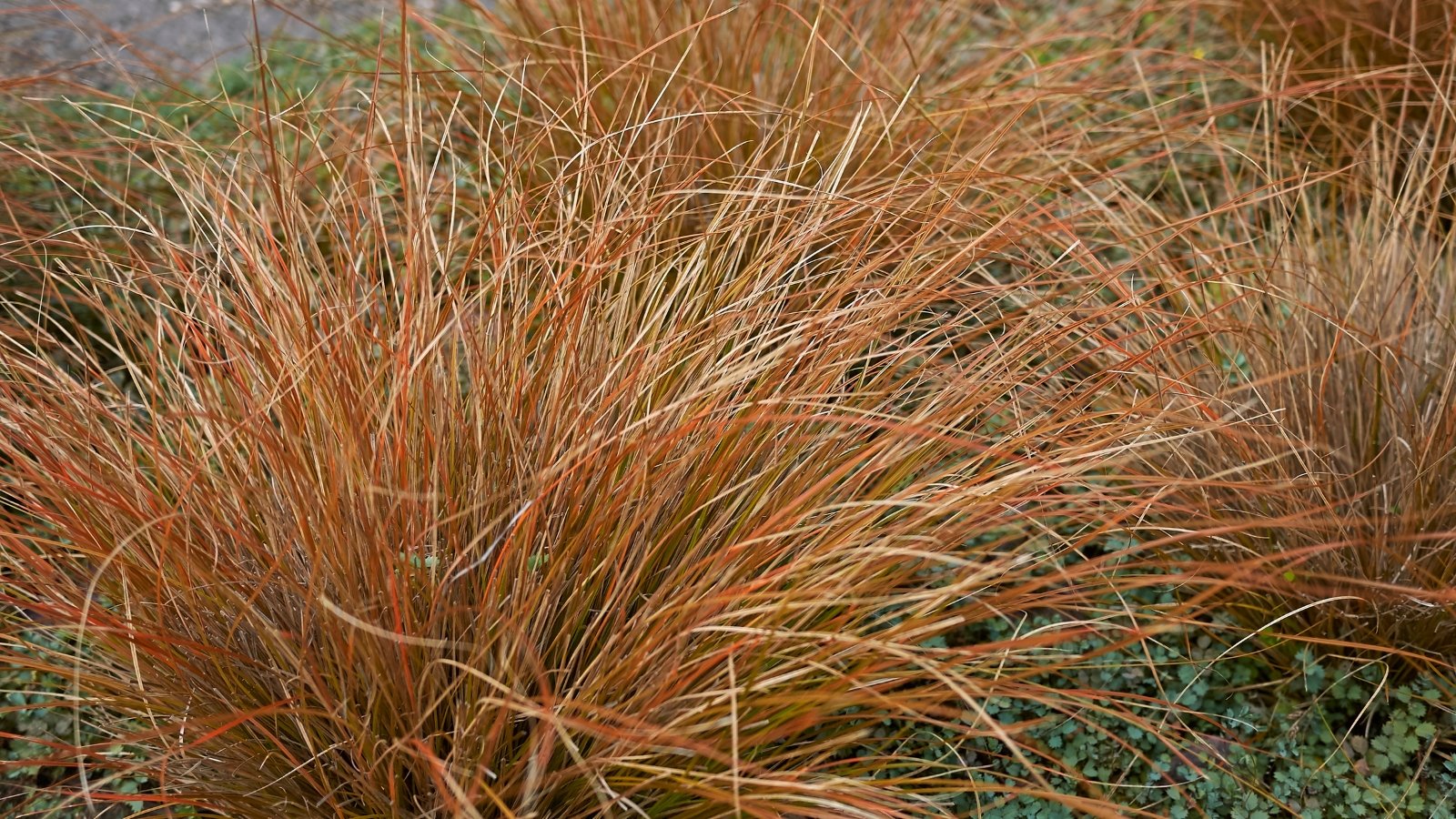
Leatherleaf sedge is bright and flashy, with fine bronze leaves that grow tall and dense. This New Zealand native is very similar in appearance to orange New Zealand sedge, but it retains its orange color through all seasons. The clumps grow up to 24 inches tall and look striking mixed with other colors and more broadleaved plants.
Bowles’ Golden Sedge
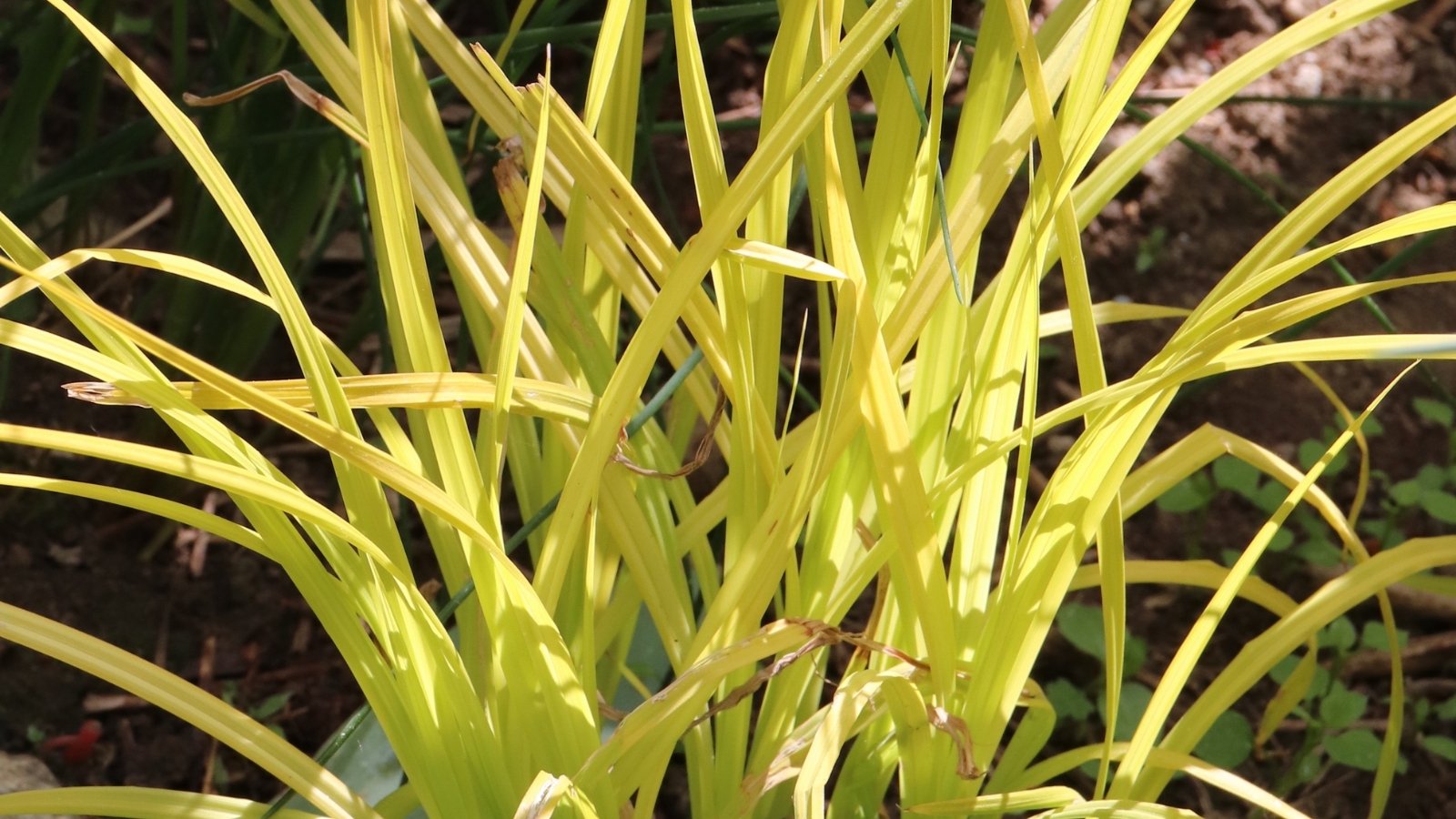
This next variety of sedge is a real eye-catcher. If you want to add a serious pop of color to the landscape, then Bowles golden sedge is the way to go. In spring, the new foliage comes in and is bright chartreuse. The color deepens slightly as it ages, but for the most part, this plant retains a striking color. Planting it in full sun will intensify the color, but even in partial shade, it will pop.
Bowles Golden Sedge is a moisture lover and performs great at the edge of a pond or in soil that retains moisture. The flowers are not noteworthy, but the electric foliage is semi-evergreen, for color all year in milder climates. This is a slow grower, so no need to worry about it taking over where you don’t want it.
Frosted Curls
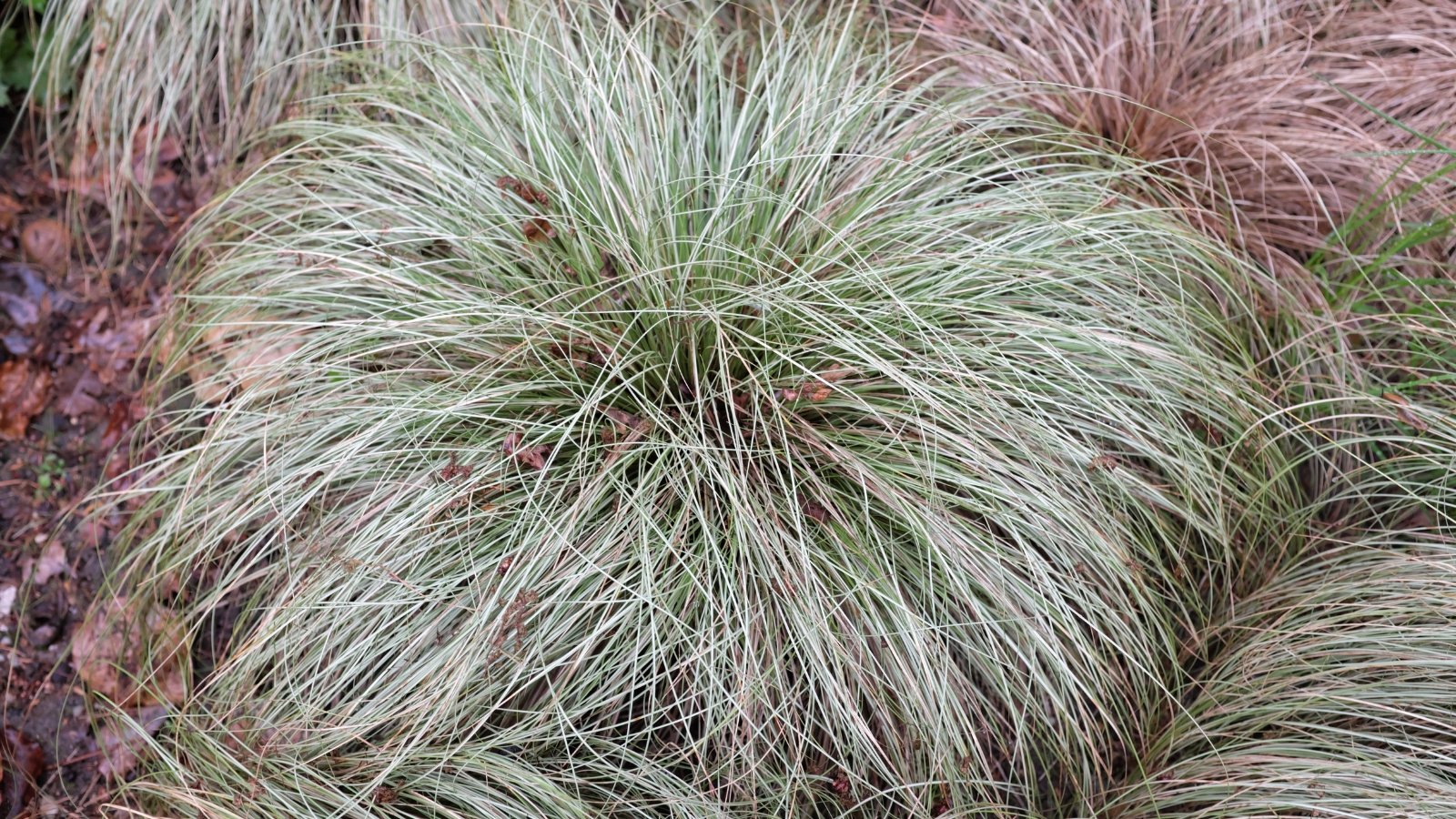
|
|
botanical name Carex comans |
|---|---|
|
|
sun requirements Full sun to partial shade |
|
|
water needs Moderate |
|
|
height 1’-2’ |
|
|
hardiness zones 7-10 |
Frosted curls is a fun and funky name for this interesting variety of New Zealand sedges. This sedge is great for softening a landscape. The mounds of fine, gray-green leaves curl downward toward the ground and add texture and movement to the garden bed. This evergreen foliage fades as it ages, turning a silvery white.
Plant frosted curls in full sun to partial shade. Once established, it will be fairly drought tolerant, but ultimately, it prefers moist soil. This sedge is wonderful for areas that frequently catch a breeze. The wind will blow the foliage around, creating beautiful whirling patterns.
Final Thoughts
Sedges are such wonderfully versatile plants. Unlike many ornamental grasses, they aren’t aggressive, allowing other plants to have space in the garden. They grow excellently in partial shade. Many types are drought tolerant, and others can tolerate boggy and wet soil types with ease. With so many varieties, you’re bound to find a sedge that catches your eye.


